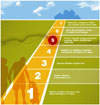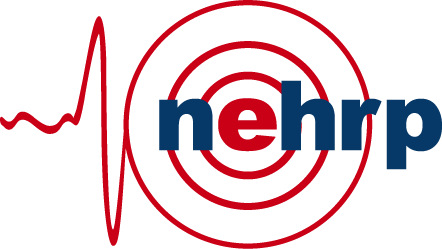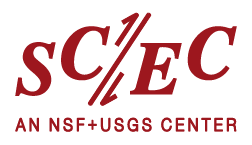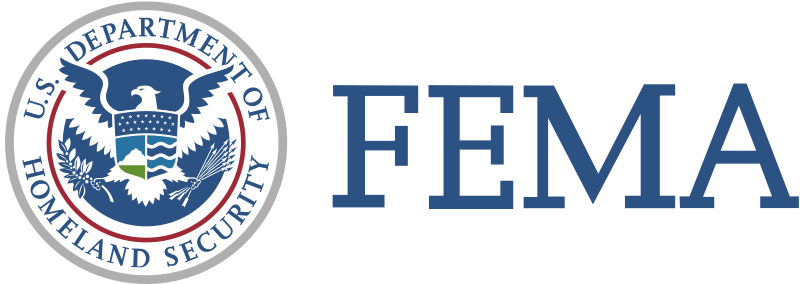- ▾ ShakeOut Regions ▾
- Alaska
- American Samoa
- Arizona
- British Columbia
- California
- Central U.S. (AL AR IA IL IN KS KY LA MO MS NE OH OK TN)
- CNMI
- Colorado
- Guam
- Hawaii
- Idaho
- Japan
- Montana
- Nevada
- New Mexico
- New Zealand
- NorthEast U.S. (CT MA ME NH NJ NY PA RI VT)
- Oregon
- Puerto Rico
- Quebec & Eastern Ontario
- SouthEast U.S. (DC DE FL GA MD NC SC VA WV)
- Texas
- Upper MidWest U.S. (MI MN ND SD WI)
- U.S. Virgin Islands
- Utah
- Washington State
- Wyoming
- Yukon
- Other Countries

Non-Profit Organizations
Californians must get better prepared before the next big earthquake, and practice how to protect ourselves when it happens. The purpose of the ShakeOut is to help people and organizations do both.
The boxes below provide instructions for how non-governmental and non-profit organizations (that are not represented by other ShakeOut categories) can plan their drill, tips for getting prepared, and suggestions for sharing the ShakeOut with others. With your participation, this may be the largest earthquake drill ever!
|
Other ways to participate: |
Which non-profits are participating? |
SHAKEOUT SPOTLIGHT
The Coachella Boys & Girls Club held their drill after school, so their members could participate. When the drill began, members dropped under pool tables, air hockey tables, bleachers, etc. After 2 minutes they gathered in the gym and discussed safety practices during earthquakes. When a boy asked if his grandmother would be OK after a big earthquake, the group discussed the importance of preparedness and how it can ease minds.
PLAN YOUR DRILL
Today:
- Register your organization to be counted in the ShakeOut Drill, to get email updates, and more.(Video versions have text captions).
October 18, 10:18 a.m.:
- Consider what may happen in a major earthquake and plan what your organization will do now to get prepared, so that when it happens you will be able to recover quickly.
- Talk to other organizations about what they have done, and encourage them to join you in getting more prepared.
- Plan your drill using one of the four levels of sample drills in the ShakeOut Drill Manual for Non Profits and Other Organizations (PDF).
- Download the Audio and Video "Drill Broadcast" recordings that have been created to provide instructions during your drill (Video versions have text captions).
October 18, 10:18 a.m.:
- Conduct your drill. If you did not choose a drill from the ShakeOut Drill Manual for Non Profits and Other Organizations, then follow these simple steps:
- Drop, Cover, and Hold On: Wherever they are at, your staff and members should Drop to the ground, take Cover under a table or desk, and Hold On to it as if a major earthquake were happening (stay down for at least 60 seconds). Practice now so they will immediately protect themselves during earthquakes! (See this page for what to do if outside, driving, in a tall building, or other situations.) For people with disabilities or access and functional needs, download our preparedness guide (661 KB) PDF.
- While still under the table, or wherever they are, have them look around and imagine what would happen in a major earthquake. What would fall on them or others? What would be damaged? What would life be like after? What will your organization do before the actual earthquake happens to reduce losses and quickly recover?
- (Optional) Practice what your staff and others will do after the shaking stops.
- After your drill is complete, have discussions about what was learned and incorporate these lessons into your disaster plan.
GET PREPARED
What we do now, before the earthquake, will determine what our lives will be like after.
- Visit MyHazards (California Governors Office of Emergency Services) to discover the hazards that exist in your area and learn how to reduce YOUR risk!
- Encourage your staff and members to get ready: The Seven Steps to Earthquake Safety is a good source for things individuals and families can do to prepare.
- Encourage your staff and members to inspect their homes and workplaces for non-structural items (bookshelves, equipment, etc.) that might fall and be damaged or cause injury and secure them.
- If your organization does not have a specific mission for disaster response, discuss what role is likely to emerge for your organization and begin to plan and create alliances to meet the mission of that role. If your organization has a specific mission for disaster response activities, review and drill your plan.
- Develop, review or exercise your organization's continuity plan with members to identify and practice their responsibilities.
- Create or review your membership contact lists and communication plan.
- Locate utility shut off valves; make sure members know the location, procedure and responsibilities for turning off utilities at their homes and workplaces if necessary.
- Inventory special skills within your organization useful in a disaster (amateur radio operator, search and rescue, etc.)
- Invite your local Fire Department to your next meeting to explain earthquake safety practices and demonstrate fire extinguisher use to employees.
- Include your critical need vendors in disaster planning. Create post-disaster agreements.
- The DRB Toolkit interactive software application is designed to assist small to midsize orgnizations build a comprehensive disaster plan and continuity program. Organizations receive a 50% discount code for the software when they register for the ShakeOut.
- Organize or refresh your emergency equipment - fire extinguishers, first aid, flashlights, food, crank radios, satellite phones, generator, fuel; make sure staff know the location and how to utilize supplies.
- Be prepared for the possibility that your members may need to shelter in place for 2 – 3 days.
- Members should store at least one gallon of water per person, per day.
- What other supplies might you need if transportation routes were blocked and staff or customers needed to remain in your facility for an extended length of time?
- Encourage staff and members to identify any structural weaknesses in their homes or workplace buildings: ask a local earthquake retrofitting contractor for a structural inspection, and develop a plan to address any issues. Or ask the building owner about the state of the building. Consider whether earthquake insurance is a good option.
- Learn to access and use California Integrated Seismic Network earthquake tools. CISN identifies the strength and location of earthquakes to assist you in making response decisions.
- Promote first responder and Community Emergency Response Team (CERT) training for your members.
SHARE THE SHAKEOUT
- Invite your members to register as individuals and as their organizations to participate in the ShakeOut.
- Display posters about ShakeOut in customer areas and on employee bulletin boards. Put ShakeOut flyers at public counters. Include a flyer in paycheck envelopes, or an article in your newsletter.
- Tell members to watch "Preparedness Now", a compelling film that depicts what will happen in a "big one," and other videos.
- Add a link to ShakeOut.org on your website; use one of several ShakeOut web banners.
- Hold a meeting among your membership and share personal and family preparedness information and discuss what individuals and their families can do to ShakeOut. Have everyone register while at the meeting, especially those without internet access.
- Once your organization is registered, you will receive ShakeOut preparedness tips, event updates, and more. Forward these to your membership and ask them to register, and forward the e-mails to everyone who matters to them. With your help this can become the largest earthquake drill in U.S. history!
- Design and host preparedness events to encourage your community to join the ShakeOut and prepare for disasters. Create alliances with other organizations to make the event a bigger success.








